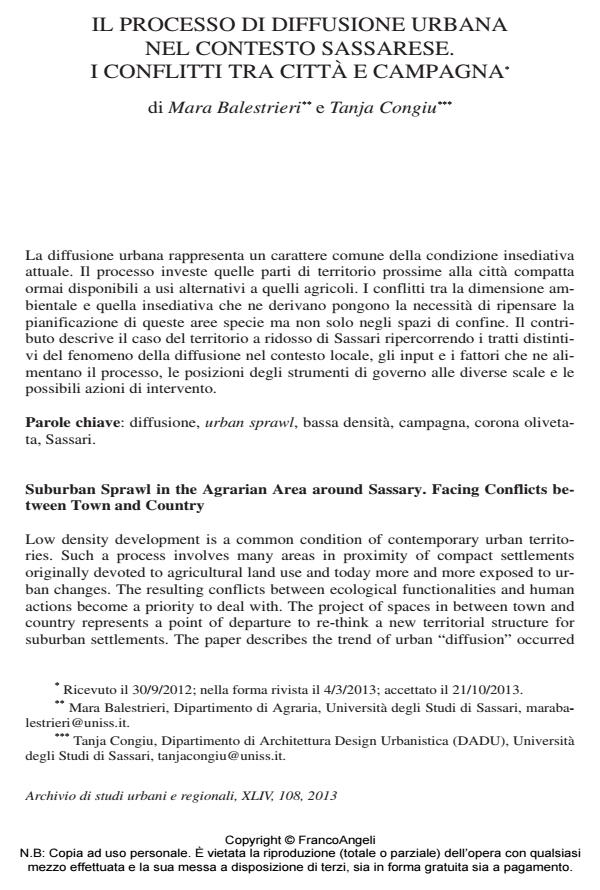Suburban Sprawl in the Agrarian Area around Sassary. Facing Conflicts between Town and Country
Journal title ARCHIVIO DI STUDI URBANI E REGIONALI
Author/s Mara Balestrieri, Tanja Congiu
Publishing Year 2014 Issue 2013/108
Language Italian Pages 27 P. 85-111 File size 2260 KB
DOI 10.3280/ASUR2013-108005
DOI is like a bar code for intellectual property: to have more infomation
click here
Below, you can see the article first page
If you want to buy this article in PDF format, you can do it, following the instructions to buy download credits

FrancoAngeli is member of Publishers International Linking Association, Inc (PILA), a not-for-profit association which run the CrossRef service enabling links to and from online scholarly content.
Low density development is a common condition of contemporary urban territories. Such a process involves many areas in proximity of compact settlements originally devoted to agricultural land use and today more and more exposed to urban changes. The resulting conflicts between ecological functionalities and human actions become a priority to deal with. The project of spaces in between town and country represents a point of departure to re-think a new territorial structure for suburban settlements. The paper describes the trend of urban "diffusion" occurred in the agrarian territory of Sassari. By a diachronic analysis of events the authors discuss spatial and social aspects of local context, conflict factors that mainly affect the territory, the role of planning and some possible interventions to improve both the quality of environment and human life.
Keywords: Urban sprawl, low density, country, planning programs and policies, "olive ring", Sassari
Mara Balestrieri, Tanja Congiu, Il processo di diffusione urbana nel contesto sassarese. I conflitti tra città e campagna in "ARCHIVIO DI STUDI URBANI E REGIONALI" 108/2013, pp 85-111, DOI: 10.3280/ASUR2013-108005